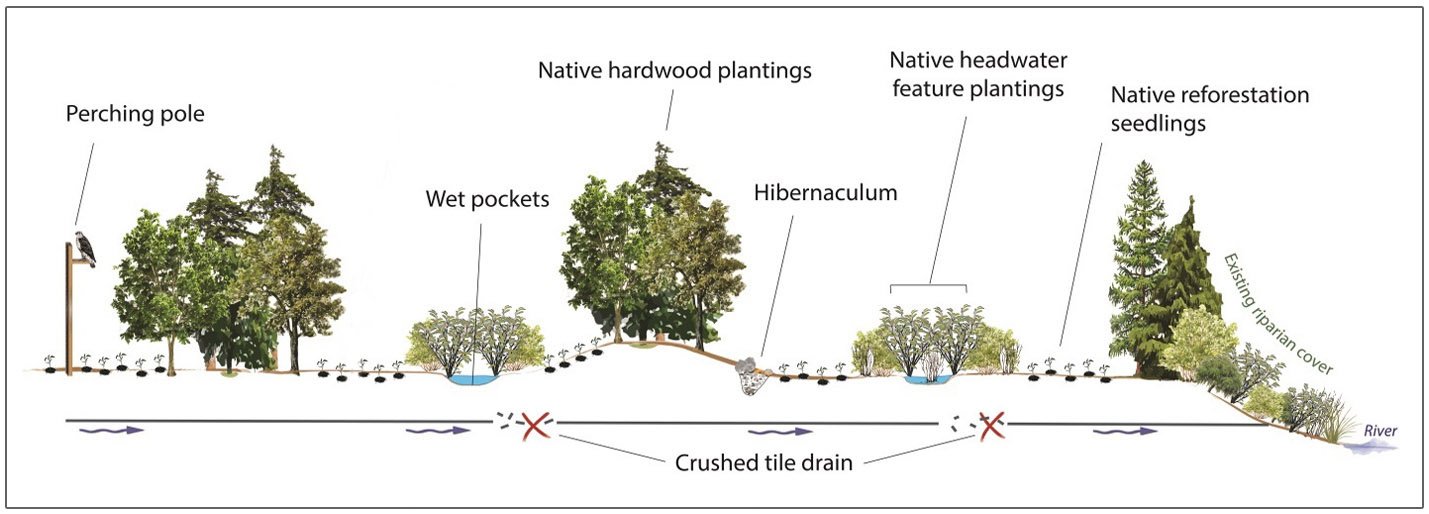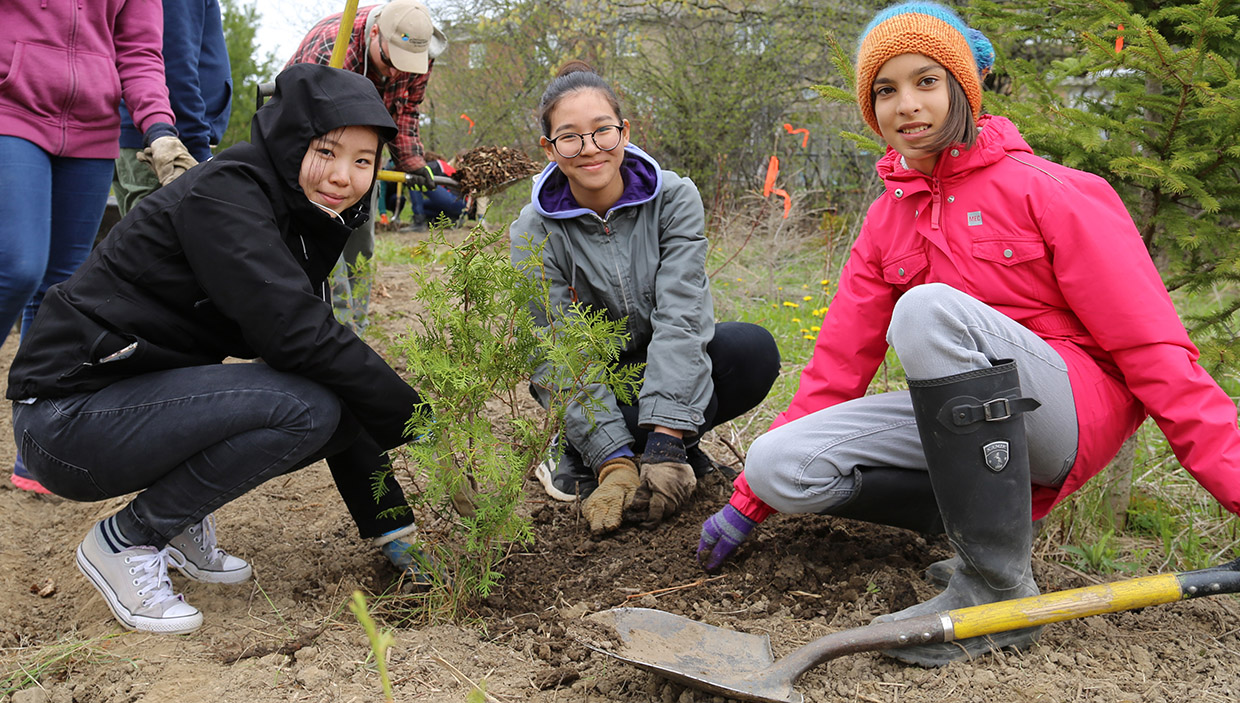WHY RESTORE FORESTS?
The forest ecosystem is critical to the survival of native wildlife and plants. Forests also provide many ecosystem services for communities in the Greater Toronto Area (GTA), from cleaner air and water to cultural and recreational opportunities.
Forests in Ontario, however, have changed drastically since European settlement in the region began; with the dramatic growth of urbanization, agriculture and the lumber business, the province’s forest ecosystem is a mere remnant today of what it once was.
These threats are further compounded by the growing presence of invasive plant species, which grow faster in the absence of natural predators and can overwhelm their native counterparts.

The benefits of forest restoration include:
- Improved habitat connectivity
- Climate change mitigation through carbon sequestration
- Air filtration
- Groundwater recharge
- Reduced urban heat island effect*
- Improved aesthetics and increased property values
- Improved physical and psychological well-being of residents and visitors**
* Due to the lack of vegetation, low ventilation, and abundance of highly reflective material (such as concrete and asphalt), urban areas are typically several degrees warmer than their rural counterparts.
** Spending time in a forest has been found to reduce depression, fatigue, anxiety and confusion. In Japan, a popular practice is “forest bathing”: the act of taking in the forest through one’s senses.
ABOUT FORESTS IN THE GTA
Forests are the most common terrestrial ecosystem found in Ontario. At over 60% canopy cover, forests are dominated by trees but also include a diversity of woody and herbaceous plants growing in the understory.
There are two forest regions that determine what type of vegetation grows in the Toronto area:
The Deciduous Forest region (also called the Carolinian Zone) just reaches the southwest portion of Toronto (western waterfront and lower portions of Etobicoke Creek, Mimico Creek, and Humber River). It is largely composed of broadleaf deciduous trees such as maples, oaks and hickories.
The Great Lakes-St. Lawrence region (Mixed Forest Region), found through much of Toronto and regions to the north and east. It consists of a mixture of coniferous and deciduous trees including white pine, eastern hemlock, maple, beech and oak.

HOW IS TRCA RESTORING FORESTS?
The first step in on-the-ground restoration involves corrections to any past hydrological impairment, such as re-grading or the removal of drainage tiles.
Trees and shrubs are then planted using potted, bareroot, and/or seedling stock. (In some areas it is important to protect the plantings from deer and rodents with fencing and tree guards.)
Once plantings are complete, we add structural features to the site to enhance essential wildlife habitat.
Enhanced Reforestation Typical: Cross Section

Forest restoration is a great way for TRCA to engage with local residents through private landowner projects and community or corporate planting events.

TRCA FOREST RESTORATION PROJECTS
Bellissimo Compensation
The Bellissimo reforestation project is located in the City of Brampton in the Humber River watershed. The project was implemented in compensation* for the natural area lost to the development of Bellissimo Subdivision.
Riparian and lowland forest planting will minimize erosion to the adjacent West Humber River, improve shading over the creek, and increase overall natural cover.

* If reductions in the natural system through development cannot be avoided, minimized, or mitigated, they can be compensated through restoration of equivalent habitat elsewhere (preferably) within the same municipality and watershed. See TRCA’s Guideline for Determining Ecosystem Compensation (2018).
Bolton Resource Management Tract Reforestation
Located within the Humber River watershed in the Town of Caledon, the Bolton Resource Management Tract reforestation project aims to increase the quantity and quality of natural cover, reduce fragmentation, increase core habitat and improve corridor linkages.

